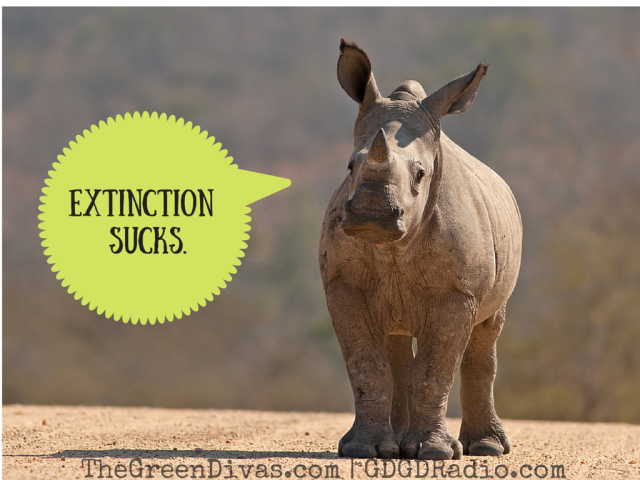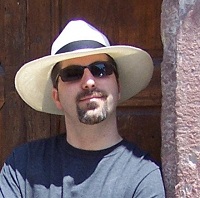
Written by John R. Platt.
The reality of extinction
Here’s the sad thing about extinction: the death of the last member of a species is rarely witnessed.
Take the western black rhino, for example. Scientists last caught sight of the final five members of this species in war-torn Cameroon in 2001. It wasn’t safe enough to return to look for them until 2006. By that time they were gone. The species was declared “likely extinct” that year, although conservationists did not formally declare the rhinos extinct until 2011.
I recently got to chat with Green Diva Meg about the extinction clock in this Green Divas Heart Wildlife podcast. Listen, then read on for more…
LISTEN:
We will witness several extinctions in 2015.
The most likely will be another rhino species, the northern white. Kike the western black, it’s again down to its last five individuals, all of which live in captivity, none of which are truly healthy enough to breed.
Several other species face similar situations. The last Rabbs’ fringe-limbed tree frog lives alone in Zoo Atlanta, waiting out its days, watched carefully by his keepers who will one day soon mark the species’ extinction.
We’re going to see—if not witness—a lot more extinctions over the coming years. Some scientists estimate that hundreds of extinctions—caused by human beings and their impact on the planet—happen every single day. The vast majority of those species disappear quietly. We don’t realize they’re gone—or even threatened—until the last individuals quietly die away.
I never give up hope, though, and neither should you.
The amazing people around the world who work to preserve these species and their habitats keep me going. The threat of so many extinctions weighs upon me as a journalist, but I know that some of these species can be saved. All we need to do is want it enough.
So what can we do?
Like so many other environmental issues, much of it boils down to understanding our impact. For some species—such as orangutans or tigers—we can make smart buying decisions, avoiding products that contain habitat-destroying palm oil. For others closer to home, we can concentrate on buying local products that don’t use as much energy, water or land. For still others, we can talk about them, raise awareness, and advocate for change from corporations or governments.
It’s a slow process, but it does work. I don’t get to write many success stories, but they’re out there. And with luck and hard work, maybe there will be more of them.
Bonus:
Listen to this Green Divas Heart Wildlife podcast about the decline in songbirds…
Listen to the latest Green Divas Radio Show—and other green and healthy living podcasts—daily on GDGDRadio.com (or get the GDGD Radio app)!

John R. Platt writes the Extinction Countdown blog for Scientific American. He also covers wildlife for TakePart, Conservation, and other publications. You can connect with him on Twitter.
[dynamic-sidebar id=’Custom Widget 2′]
~Asst. Ed. Green Diva Christine | Images via Shutterstock
green Bean
April 21, 2015 at 1:51 pm
Thank you for helping to raise awareness about extinction. Experts say that our loss of biodiversity is as big of a deal as climate change.
Betsy (Eco-novice)
April 22, 2015 at 12:54 am
I heard on the radio that we are in the midst of the sixth mass extinction. It is nice to know that some of our actions do make a difference.
Lisa Sharp
April 22, 2015 at 11:51 am
The extinction rate right now is just insane. And the fact that we are responsible for so much of it is just sickening.
Pingback: 4 Ways to See the Good In Almost Anything | Maria Shriver
Pingback: 10 Ways to Find the Good in Life and Focus on the Positive – HealthIt